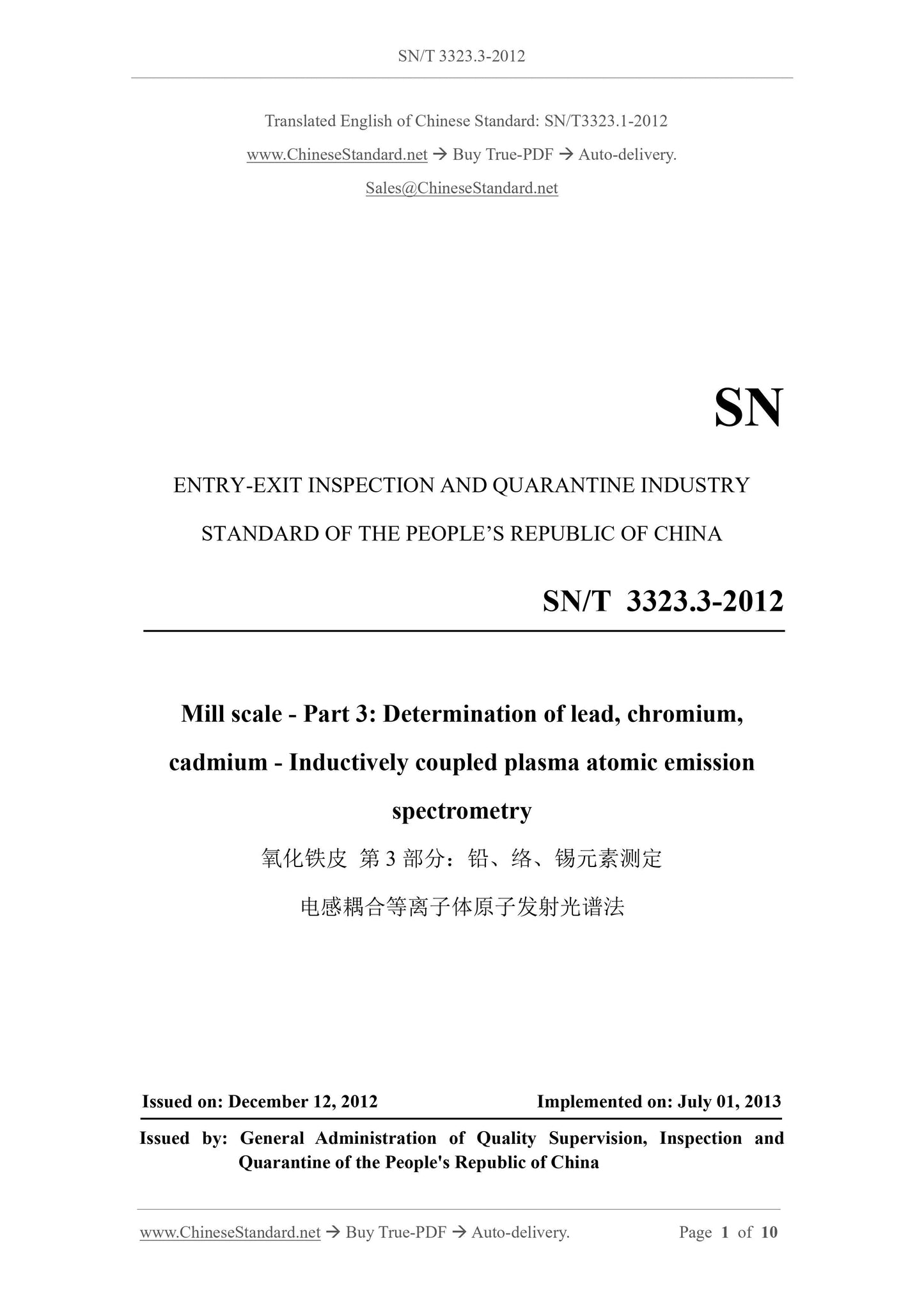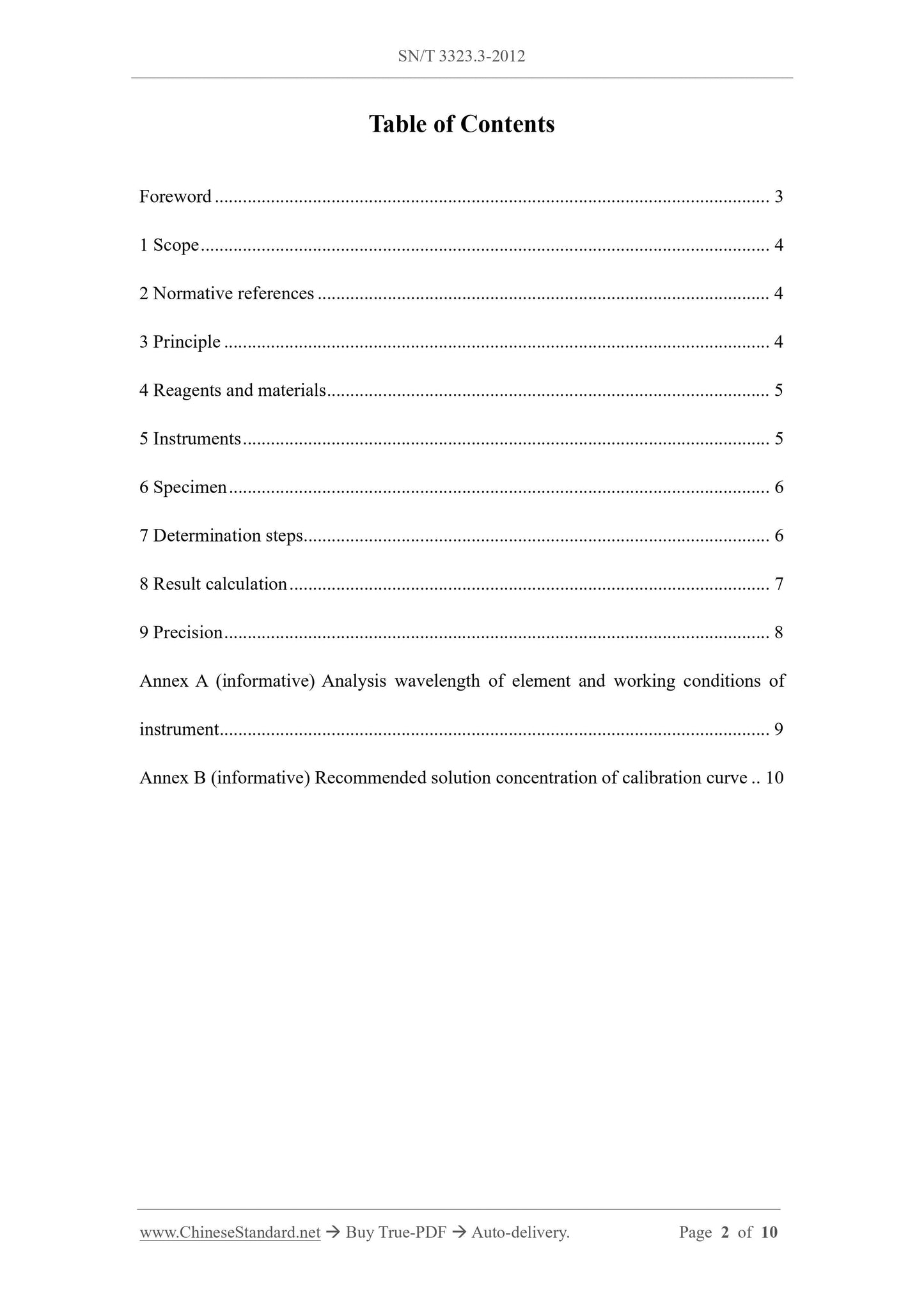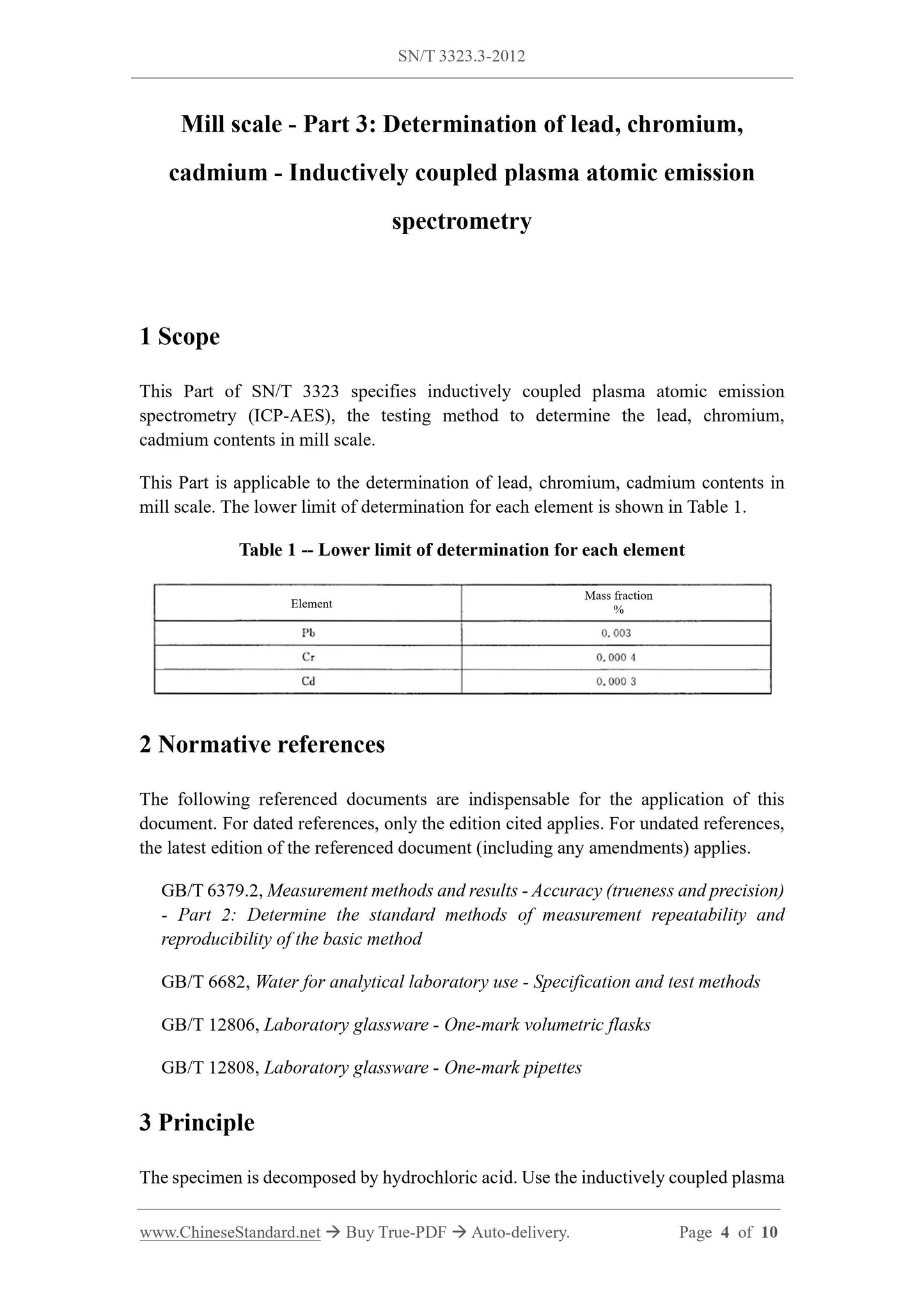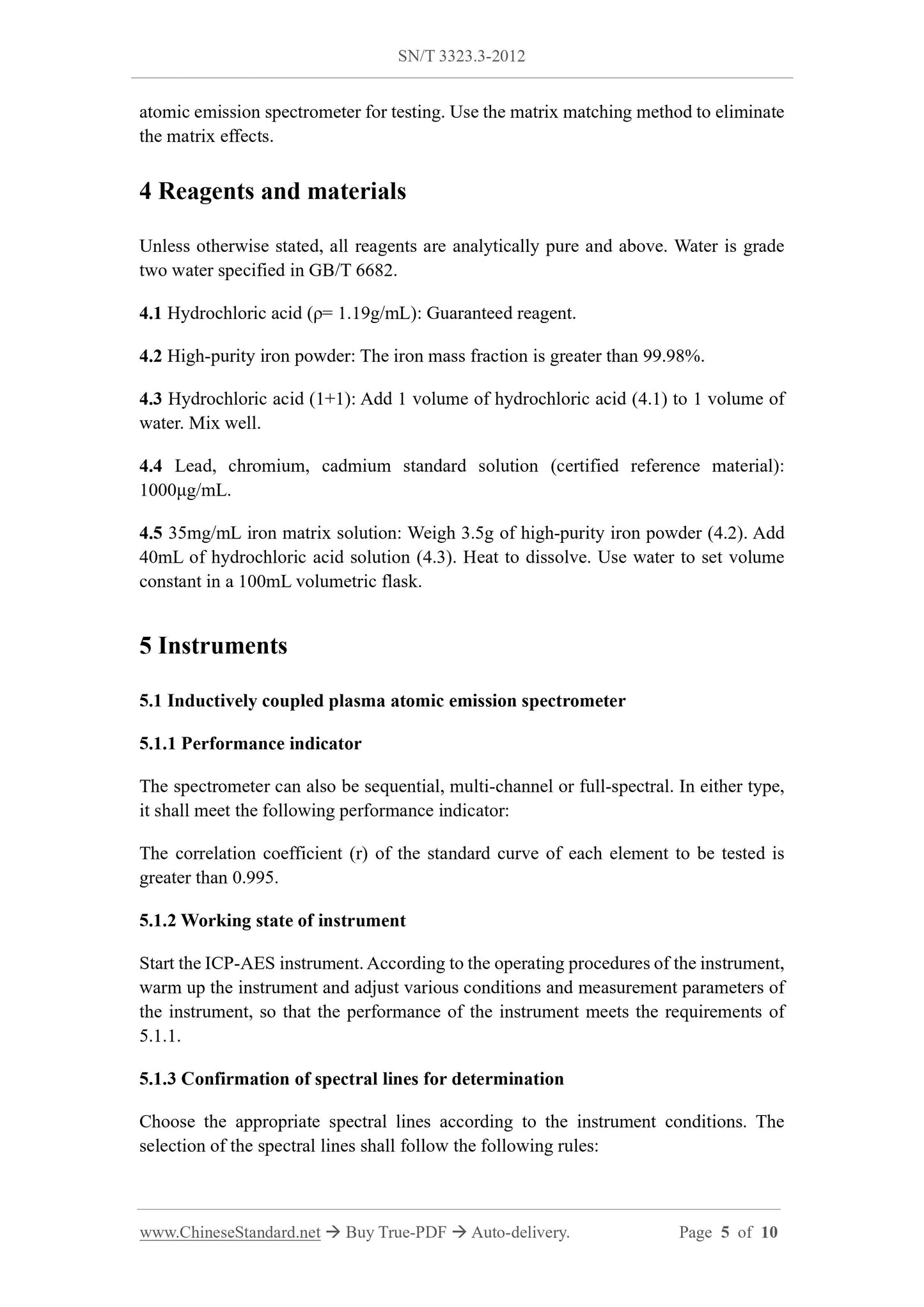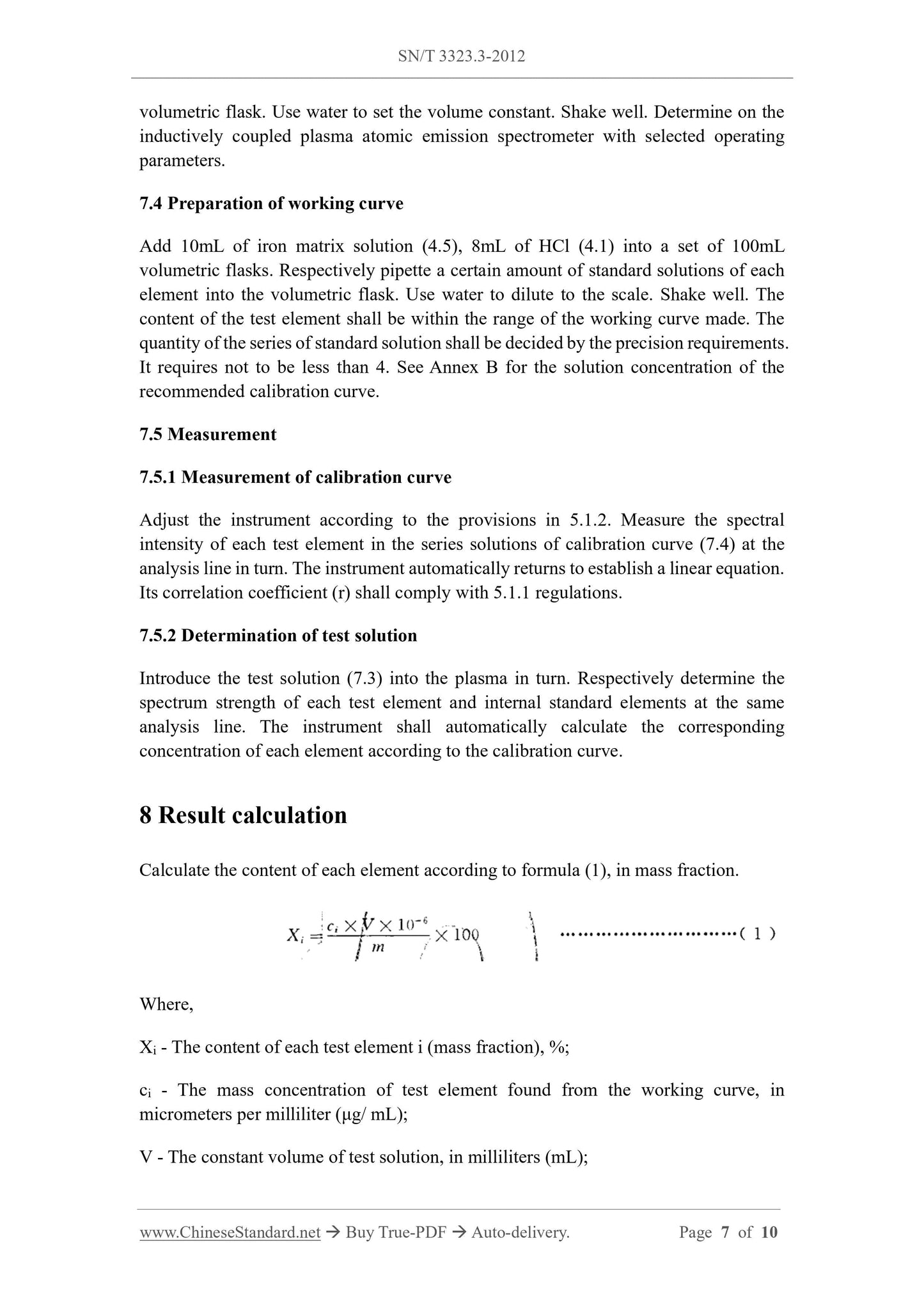1
/
of
5
www.ChineseStandard.us -- Field Test Asia Pte. Ltd.
SN/T 3323.3-2012 English PDF (SN/T3323.3-2012)
SN/T 3323.3-2012 English PDF (SN/T3323.3-2012)
Regular price
$215.00
Regular price
Sale price
$215.00
Unit price
/
per
Shipping calculated at checkout.
Couldn't load pickup availability
SN/T 3323.3-2012: Mill scale - Part 3: Determination of lead, chromium, cadmium - Inductively coupled plasma atomic emission spectrometry
Delivery: 9 seconds. Download (and Email) true-PDF + Invoice.Get Quotation: Click SN/T 3323.3-2012 (Self-service in 1-minute)
Newer / historical versions: SN/T 3323.3-2012
Preview True-PDF
Scope
This Part of SN/T 3323 specifies inductively coupled plasma atomic emissionspectrometry (ICP-AES), the testing method to determine the lead, chromium,
cadmium contents in mill scale.
This Part is applicable to the determination of lead, chromium, cadmium contents in
mill scale. The lower limit of determination for each element is shown in Table 1.
Table 1 -- Lower limit of determination for each element
Basic Data
| Standard ID | SN/T 3323.3-2012 (SN/T3323.3-2012) |
| Description (Translated English) | Mill scale - Part 3: Determination of lead, chromium, cadmium - Inductively coupled plasma atomic emission spectrometry |
| Sector / Industry | Commodity Inspection Standard (Recommended) |
| Classification of Chinese Standard | H54 |
| Word Count Estimation | 9,981 |
| Quoted Standard | GB/T 6379.2; GB/T 6682; GB/T 12806; GB/T 12808 |
| Regulation (derived from) | National Quality Inspection (2012) 777; industry standard filing Notice 2013 No. 4 (No. 160 overall) |
| Issuing agency(ies) | General Administration of Customs |
| Summary | This standard specifies the inductively coupled plasma atomic emission spectrometry (ICP-AES) Determination of iron oxide of lead, chromium, chromium content detection method. This standard applies to iron oxide of lead, chromium, chromium content of each |
Share
